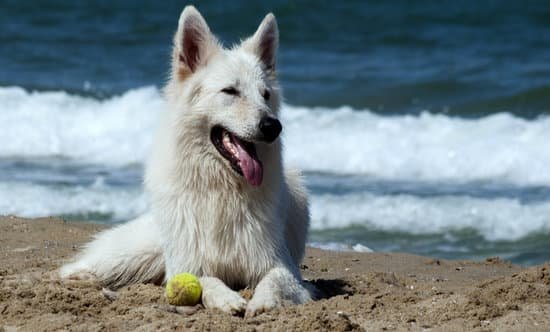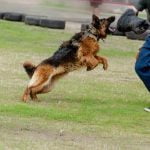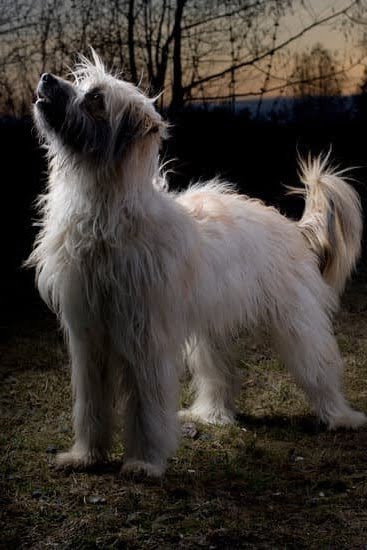How did they train sled dogs in the first place? The history of sled dog training dates back to ancient times and holds a significant role in indigenous cultures. The unique relationship between humans and sled dogs, as well as the physical and mental qualities needed for this activity, have shaped the training methods used over centuries.
Sled dogs have been an integral part of indigenous cultures, serving as reliable companions and essential helpers in transportation and hunting endeavors. Their exceptional endurance, strength, intelligence, and resilience are crucial attributes that have made them invaluable to their human counterparts. From the Inuit people of the Arctic to the Indigenous peoples of North America, sled dog training techniques have been passed down through generations as a vital skill for survival.
The traditional training methods used by indigenous peoples highlight the bond between musher and sled dog, relying on trust, respect, and clear communication. These methods often involve positive reinforcement and the use of traditional commands to guide the sled dogs through various terrains and weather conditions. As time has progressed, modern techniques have also come into play, incorporating technological advancements while still emphasizing the importance of a strong human-canine bond.
The Role of Sled Dogs in Indigenous Cultures
Sled dogs have played a crucial role in the lives of indigenous peoples for centuries. In regions with harsh winter climates, these dogs were essential for transportation, hunting, and communication.
Inuit, Yupik, and other indigenous cultures relied on sled dogs to traverse long distances over snow and ice, allowing them to access resources and maintain contact with neighboring communities. The bond between humans and sled dogs was not merely utilitarian; it was a deep, symbiotic relationship built on mutual trust and respect.
Traditional Uses of Sled Dogs
In indigenous cultures, sled dogs were integral to daily life. They were used to pull heavy loads of supplies, such as food and firewood, across vast frozen landscapes. Additionally, sled dogs assisted in hunting expeditions by tracking prey and navigating treacherous terrain. Their speed, endurance, and agility made them invaluable companions in the harsh Arctic environment. Moreover, sled dogs served as loyal guardians, alerting their human counterparts to potential dangers like polar bears or thin ice.
Cultural Significance
Sled dogs were not only working animals but also held significant cultural importance for indigenous peoples. They were revered for their contributions to community survival and were often treated with great care and affection.
In many oral traditions and art forms of indigenous cultures, sled dogs are celebrated as heroes and respected members of the community. Their legacy continues to be honored through festivals, stories, and artwork that pay homage to the vital role they played in sustaining traditional ways of life.
As we delve into the history of sled dog training within indigenous cultures, it becomes clear that these remarkable animals held a revered place within these societies-integral to both practical needs and spiritual traditions.
The Physical and Mental Qualities Needed in Sled Dogs
Sled dogs are a unique breed that possess a combination of physical and mental qualities that make them well-suited for the challenging task of pulling sleds across snow-covered terrain. One of the most important physical qualities needed in sled dogs is endurance.
These dogs must be able to sustain their energy over long distances, often for hours on end. Additionally, they require strong muscles and resilient joints to withstand the rigors of pulling heavy loads through harsh winter conditions.
In addition to physical qualities, sled dogs also need to have the right mental attributes. They must possess a strong work ethic and a willingness to take commands from their musher without question. Mental toughness is also crucial, as sled dogs often face unpredictable weather and terrain during their journeys.
| Physical Qualities | Mental Qualities |
|---|---|
| Endurance | Strong Work Ethic |
| Strength | Willingness to Take Commands |
| Resilient Joints | Mental Toughness |
Ultimately, these physical and mental qualities are what make sled dogs such invaluable partners in the world of dog sledding, allowing them to excel in their roles as dedicated and reliable working animals.
Training Methods Used by Indigenous Peoples
Sled dog training has a rich history that dates back to indigenous cultures in the Arctic regions. The methods used by these cultures for training sled dogs were instrumental in the development of modern techniques. Here are some of the traditional training methods used by indigenous peoples:
- Early exposure: Indigenous peoples would expose sled dogs to the environment and equipment from an early age. This allowed the dogs to become familiar with their surroundings and the tools used for pulling sleds.
- Learning through observation: Sled dogs would often learn by observing older, more experienced dogs. This method of learning through observation and mimicry was crucial in passing on skills and behaviors from one generation of sled dogs to the next.
- Physical conditioning: Indigenous peoples relied on activities such as hunting and fishing to condition their sled dogs physically. These activities also provided mental stimulation, helping the dogs develop crucial problem-solving skills.
The training methods used by indigenous peoples focused on building a strong bond between humans and sled dogs, as well as developing the physical and mental qualities needed for survival in harsh environments. These traditional techniques continue to influence modern sled dog training, highlighting the enduring legacy of indigenous cultures in this field.
Modern Techniques for Training Sled Dogs
Utilizing Positive Reinforcement
One of the key modern techniques for training sled dogs is the use of positive reinforcement. This method involves rewarding the sled dogs for exhibiting desired behaviors, such as following commands or working well as part of a team.
Treats, praise, and play are common forms of positive reinforcement used to motivate and encourage sled dogs during training. This approach not only fosters a strong bond between musher and dog but also helps create a positive and enjoyable training experience for the animals.
Utilizing Technology
Another modern technique for training sled dogs involves the use of technology. GPS tracking devices and heart rate monitors are often used to monitor the performance and health of sled dogs during training sessions and races.
These tools provide valuable data that can be used to assess the effectiveness of training methods, track the progress of individual dogs, and ensure their safety and well-being. Additionally, video recordings are often used to analyze the behavior and movements of sled dogs, allowing mushers to make informed decisions about their training regime.
Utilizing Science-Based Training Methods
In recent years, there has been a shift towards utilizing science-based training methods in sled dog training. This approach involves applying principles from animal behavior and learning theory to develop more effective and humane training techniques.
By understanding how sled dogs think, learn, and respond to different stimuli, mushers can tailor their training methods to suit the individual needs of each dog. This ensures that sled dogs are trained in a way that is respectful of their natural instincts and abilities.
Overall, modern techniques for training sled dogs have evolved to prioritize positive reinforcement, utilize technology for monitoring and analysis, and incorporate science-based methods that respect the natural behaviors of these remarkable animals. As mushers continue to refine their approach to sled dog training, it is clear that the enduring legacy of this ancient practice will persist in the modern world.
The Use of Positive Reinforcement and Traditional Commands
Sled dog training has a rich history, often interwoven with indigenous cultures and their traditional methods. One key aspect of sled dog training is the use of positive reinforcement and traditional commands. Positive reinforcement involves rewarding desired behaviors to encourage their repetition, while traditional commands are used to communicate with the dogs during sledding activities.
In the past, indigenous peoples relied on positive reinforcement techniques such as offering food rewards and affectionate gestures to train their sled dogs. Traditional commands were also an essential part of sled dog training, with mushers using verbal cues and hand signals to direct the dogs. These methods were not only effective in shaping the behavior of sled dogs but also fostered a strong bond between the musher and the dogs.
In modern times, positive reinforcement continues to be a fundamental part of sled dog training. Treats, praise, and play are commonly used as rewards for good behavior and obedience.
Additionally, modern sled dog trainers still employ traditional commands passed down from earlier generations, preserving cultural heritage while effectively communicating with their canine partners. The use of positive reinforcement and traditional commands reflects a deep understanding of canine behavior and psychology, reinforcing the enduring legacy of sled dog training in the modern world.
The Importance of Bonding Between Musher and Sled Dog
The bond between a musher and their sled dog is of utmost importance in the world of dog sledding. The relationship between human and animal is crucial for successful training and racing. The bond starts with the selection process, where both the musher and the dog get to know each other’s personalities and work ethics. This understanding helps in creating a strong foundation for effective communication and teamwork.
In indigenous cultures, bonding has always been an essential aspect of sled dog training. Dogs were not just seen as working animals but also as companions. Training methods involved spending a significant amount of time with the dogs, understanding their behaviors, and developing a connection based on trust and respect. This bond was often considered sacred and played a vital role in the success of hunting, transportation, and survival in harsh environments.
In modern times, while training techniques have evolved, the significance of bonding remains unchanged. Positive reinforcement methods have been incorporated to strengthen the connection between mushers and their sled dogs. Establishing trust through praise, treats, and affection is now a fundamental part of training programs. Modern mushers understand that a happy and well-connected dog will perform better on the trail, highlighting the enduring legacy of this unique partnership in the world of sledding.
| Importance | Examples |
|---|---|
| Bonding between musher and sled dog | Understanding each other’s personalities |
| Incorporating positive reinforcement | Praise, treats, affection |
| Modern understanding of connection | A happy well-connected dog performs better on trails. |
The Challenges and Rewards of Training Sled Dogs
Training sled dogs is no small feat and comes with its challenges, but the rewards are immeasurable. The physical and mental qualities needed in sled dogs are essential for their success. These dogs must be strong, have high endurance, and be able to withstand extreme cold temperatures. They also need to possess a strong work ethic, intelligence, and a cooperative nature.
One of the major challenges in training sled dogs is ensuring that they are well-behaved and obedient. This requires consistent and patient training methods, as well as establishing a strong bond between the musher and the dogs. Modern techniques for training sled dogs often involve positive reinforcement, such as rewarding good behavior with treats or praise. Traditional commands that have been used for generations by indigenous peoples are also still widely utilized in sled dog training.
Beyond the challenges, the rewards of training sled dogs are numerous. The bond that develops between musher and dog is incredibly rewarding and can lead to a successful team on the trails. The satisfaction of watching a team of well-trained sled dogs work together seamlessly is unmatched. Additionally, there is a sense of pride in taking part in a tradition that has been passed down through generations and continues to thrive today.
How Sled Dog Training Has Evolved Over Time
Sled dog training has a rich history that dates back to indigenous cultures, where these dogs played a vital role in transportation, hunting, and even companionship. Over time, the methods of training sled dogs have evolved, combining traditional techniques with modern approaches to create a harmonious partnership between musher and canine athlete.
One of the oldest known methods used by indigenous peoples for sled dog training is through positive reinforcement and traditional commands. This method involves rewarding the dogs with treats or praise for exhibiting desired behaviors such as pulling the sled or following commands. Additionally, using traditional language or signals allows the musher to communicate effectively with the sled dogs during their journeys across snowy terrain.
In contrast, modern techniques for training sled dogs often incorporate elements of science-based conditioning and behavior modification. This may include utilizing clicker training, which helps reinforce specific actions with a distinct sound, as well as implementing structured exercise routines to develop the physical stamina and endurance of the sled dogs. Furthermore, some trainers emphasize mental stimulation through puzzle toys or interactive games to keep their canine companions engaged and motivated.
- Indigenous Training Methods
- Positive reinforcement
- Traditional commands
- Modern Training Techniques
- Clicker training
- Structured exercise routines
- Mental stimulation and enrichment
Conclusion
In conclusion, the history of sled dog training is deeply intertwined with indigenous cultures and their way of life. The enduring legacy of sled dog training has left a lasting impact on the modern world, as it continues to be a popular sport and mode of transportation in many cold, snowy regions. The physical and mental qualities needed in sled dogs have been recognized and preserved through the generations, making these animals an invaluable part of many communities.
The training methods used by indigenous peoples have laid the foundation for modern techniques, with a focus on positive reinforcement and traditional commands. The importance of bonding between musher and sled dog is a key aspect that has stood the test of time, fostering a strong sense of teamwork and trust between human and animal.
As sled dog training has evolved over time, from its origins in indigenous cultures to modern practices, there remain both challenges and rewards for those involved in this unique field.
As we look to the future, it is clear that the legacy of sled dog training will continue to endure in the modern world. Whether it’s for competitive racing, recreational sledding, or as working dogs in remote areas, the role of these animals remains vital. The history, traditions, and techniques developed over centuries by indigenous peoples have paved the way for the ongoing appreciation and utilization of sled dogs in today’s society.

Welcome to the blog! I am a professional dog trainer and have been working with dogs for many years. In this blog, I will be discussing various topics related to dog training, including tips, tricks, and advice. I hope you find this information helpful and informative. Thanks for reading!





